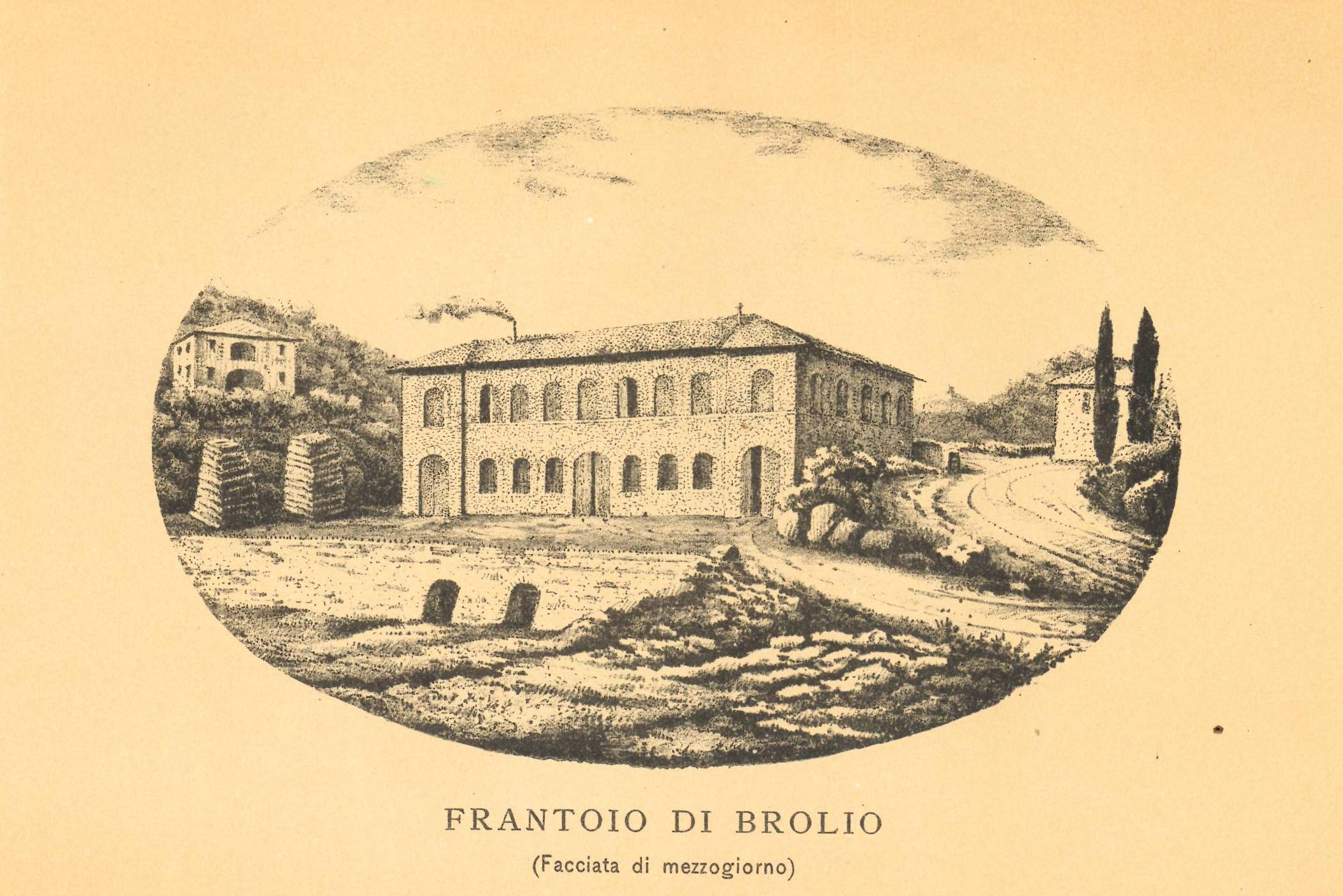THE OLIVE GROVES AND THE OIL AT BROLIO
![]()
![]()
The combination of oil and the castle at Brolio dates far back in time. Olive trees have always been a part of the Chianti landscape and agriculture. In the past they provided a valuable, indispensable food; today they are preserved as the guardian of a landscape unique in the world.
The foresight of the Ricasoli family at the end of the nineteenth century led to the construction of a building used exclusively for the production of olive oil. In the current building that houses the reception, the administrative offices and our shop, there was a steam oil press from the well-known English factory Clayton, unique in Italy. It both moved the stone grinders and pressed the pomace. It was created in 1885 by Giovanni Ricasoli Firidolfi, grandson of the more famous Iron Baron Bettino.
Today olive growing in Brolio is part of the cultural heritage of the company and the Ricasoli family.


There are about 15 hectares of olive trees for a total of 4,000 plants. The varieties cultivated are the unparalleled trio consisting of Frantoio, Leccino and Moraiolo. In the past the olive trees were mixed together with other crops such as vines and fodder. With the advent of intensive viticulture, the old olive trees are located on the edges of the vineyards or along the farm roads, as if they were guardians of the more important grapevines. Many are centuries-old olive trees that have their roots in soils of different composition, which then give the oil unique and distinguishable flavors and scents. The frost of 1985 destroyed most Tuscan olive groves, but thanks to skillful pruning, today they live again, providing olive oil of high quality and great individuality.
The olive trees are cultivated completely free of pesticides and chemical fertilizers. Pruning takes place every two years and grass covers the soils: this keeps the soil solid and contributes to the biodiversity of the “Brolio microcosm”.
Olive groves at Podernovi: located at an altitude of about 437 meters a.m.s.l.; the soil is clayey limestone (Alberese). The cultivars present are Moraiolo, Frantoio and Leccino. The olives obtained from this grove are used to produce the “classic” type of olive oil (mix of the three cultivars)
Olive groves at La Comune: located at 420 meters a.m.s.l.; the soil is composed of sand and rocks (Arenarie). It is a young olive grove, planted in 1985 following the terrible frost of the same year. The cultivars present are mainly Leccino and Moraiolo. The olives obtained are used to produce the “classic” type of oil (mix of the three cultivars).
Olive groves near the Castle: located under the walls of the castle of Brolio, at an altitude of 500 meters a.m.s.l., the soil is composed of sand and rocks (Arenarie – Macigno del Chianti) and the cultivars there are Moraiolo, Frantoio and Leccino. The olives obtained are used to produce the “classic” type of oil.
Olive groves at Tarci: located at an altitude of about 500 meters a.m.s.l., with soil composed of sand and rocks (Arenarie – Macigno del Chianti). The most prevalent cultivar is the Frantoio and the olives that grow there are used to produce the monocultivar Frantoio olive oil.
Olive groves at Santa Lucia: located at an altitude of 350 meters a.m.s.l., soil with both clayey limestone (Alberese) and marine deposit characteristics, the prevailing cultivar is Moraiolo. The olives obtained are used to produce the monocultivar Moraiolo olive oil.


The harvest period follows the maturation of cultivars in the various areas, and is carried out exclusively by hand with olive rakes. Once harvested, the olives are deposited in well-ventilated crates and immediately brought to the trusted oil mill located a few kilometers from the farm.
The extraction is cold, in a continuous method, with temperatures never exceeding 25°C, to preserve all the oil’s characteristics of freshness and authenticity. Once produced, the oil is filtered and stored in stainless steel containers in an area protected from the air. This avoids oxidation and therefore alterations of the exquisite oil.
The different cultivars are stored separately until bottling. It is only at that moment that the varietal blend is made for the classic, while the monocultivar oils are packaged maintaining their varietal purity.